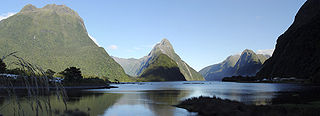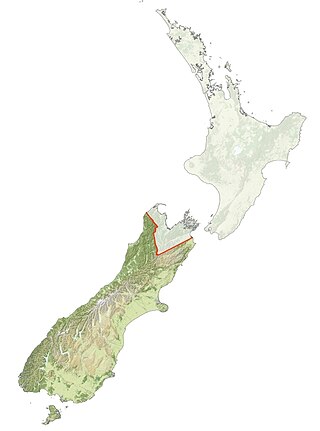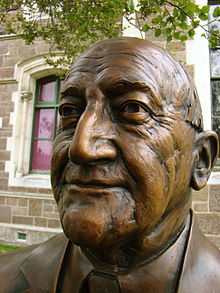
Milford Sound is a fiord in the south west of New Zealand's South Island within Fiordland National Park, Piopiotahi Marine Reserve, and the Te Wahipounamu World Heritage site. It has been judged the world's top travel destination in an international survey and is acclaimed as New Zealand's most famous tourist destination. Rudyard Kipling called it the eighth Wonder of the World. The fiord is most commonly accessed via road by tour coach, with the road terminating at a small village also called Milford Sound.

Ngāi Tahu, or Kāi Tahu, is the principal Māori iwi (tribe) of the South Island. Its takiwā is the largest in New Zealand, and extends from the White Bluffs / Te Parinui o Whiti, Mount Mahanga and Kahurangi Point in the north to Stewart Island / Rakiura in the south. The takiwā comprises 18 rūnanga corresponding to traditional settlements. According to the 2018 census an estimated 74,082 people affiliated with the Kāi Tahu iwi.
Waitaha, an early Māori iwi, inhabited the South Island of New Zealand. They were largely absorbed via marriage and conquest - first by the Ngāti Māmoe and then by Ngāi Tahu - from the 16th century onward. Today those of Waitaha descent are represented by the Ngāi Tahu iwi. Like Ngāi Tahu today, Waitaha was itself a collection of various ancient iwi. Kāti Rākai was said to be one of Waitaha's hapū.

Lyttelton Harbour / Whakaraupō is a major inlet on the northwest side of Banks Peninsula, on the coast of Canterbury, New Zealand; the other major inlet is Akaroa Harbour, which enters from the southern side of the peninsula. Whakaraupō enters from the northern coast of the peninsula, heading in a predominantly westerly direction for approximately 15 km (9.3 mi) from its mouth to the aptly-named Head of the Bay near Teddington. The harbour sits in an eroded caldera of the ancient Banks Peninsula Volcano, the steep sides of which form the Port Hills on its northern shore.

Port Levy is a long, sheltered bay and settlement on Banks Peninsula in Canterbury, New Zealand. The current population is under 100, but in the mid-19th century it was the largest Māori settlement in Canterbury with a population of about 400 people. It is named after Solomon Levey, an Australian merchant and ship owner who sent a number of trading vessels to the Banks Peninsula area during the 1820s.
Uruaokapuarangi was one of the great ocean-going, voyaging canoes that was used in the migrations that settled the South Island according to Māori tradition.

The Estuary of the Heathcote and Avon Rivers / Ihutai is the largest semi-enclosed shallow estuary in Canterbury and remains one of New Zealand's most important coastal wetlands. It is well known as an internationally important habitat for migratory birds, and it is an important recreational playground and educational resource. It was once highly valued for mahinga kai.
Hāriata Whakatau Pītini-Morēra was a New Zealand Māori leader, genealogist, historian and conservationist. Tipene O'Regan called her “the most important leader of Ngāti Kurī”, a subtribe of Ngāi Tahu in the South Island. With her husband Hoani Pītini-Morēra she was responsible for the preservation of many culturally important sites through the South Island, including burial grounds. She was well regarded for her knowledge of traditional weaving and also fought to preserve harakeke-growing areas.
Wharetutu Te Aroha Stirling was a notable New Zealand tribal leader and conservationist. Of Māori descent, she identified with the Ngāi Tahu iwi. She was a major participant in the Ngāi Tahu Treaty of Waitangi claim and settlement process. She was born in Lyttelton, North Canterbury, New Zealand in 1924.
Ngāi Tahu Holdings Corporation Limited is owned by the Ngāi Tahu iwi of the South Island of the New Zealand. Its main interests are in tourism, fisheries, property and forestry and it is among the wealthiest iwi in New Zealand. Ngāi Tahu annually contributes more than $200 million to the South Island economy.

Hana Merenea O'Regan is a Māori language advocate and academic in New Zealand. She is a member of the Ngāi Tahu iwi (tribe).
Rākaihautū was the captain of the Uruaokapuarangi canoe and a Polynesian ancestor of various iwi, most famously of Waitaha and other southern groups, though he is also known in the traditions of Taitokerau, and in those of Rarotonga.
Louise Magdalene Teowaina Wallscott was a Māori activist, teacher and weaver.
Charles Eldon Fayne Robinson is a New Zealand Māori artist specialising in carving. Robinson has contributed to the carving of buildings on many marae in New Zealand as well as exhibiting his art in galleries and museums.

Browning Pass / Nōti Raureka is a mountain pass across the Southern Alps, on the South Island of New Zealand. The pass reaches an elevation of 1,411 metres (4,629 ft) above sea level, connecting the upper reaches of the Wilberforce River with the West Coast.
Catherine Elizabeth Brown was a New Zealand Māori tohunga raranga, ceramicist, educator and netball coach. She affiliated to the Ngāi Tahu iwi. Brown played a pivotal role during her lifetime in educating New Zealanders about Māori arts as well as organising workshops, hui, conventions, and exhibitions on Māori arts, particularly Māori weaving. As well as educating and organising, Brown was an acknowledged master weaver and artist whose work was exhibited both nationally and internationally. Brown was awarded a Queen's Service Medal in 1995 as well as the Ngā Tohu ā Tā Kingi Ihaka award in 2000 in recognition of her contribution to Māori arts.

Rānui Ngārimu is a New Zealand Māori weaver and textile artist. She has chaired Te Roopu Raranga Whatu o Aotearoa, the national Māori weavers' collective, and is formally acknowledged as a master weaver by appointment to the collective's Kāhui Whiritoi group in 2008.

Atholl John Anderson is a New Zealand archaeologist who has worked extensively in New Zealand and the Pacific. His work is notable for its syntheses of history, biology, ethnography and archaeological evidence. He made a major contribution to the evidence given by the iwi (tribe) Ngāi Tahu to the Waitangi Tribunal.
Ngā Pae o te Māramatanga (NPM) is New Zealand's Māori Centre of Research Excellence (CoRE). It was established in 2002 and is hosted by the University of Auckland with 21 research partners and is funded, like other CoRE's, by the Tertiary Education Commission. The mission was to conduct research for, with and by Māori communities which leads to transformation and positive change.

Charles Stuart Te Manemoeroa Crofts was a New Zealand Māori leader of the Ngāi Tahu iwi.











